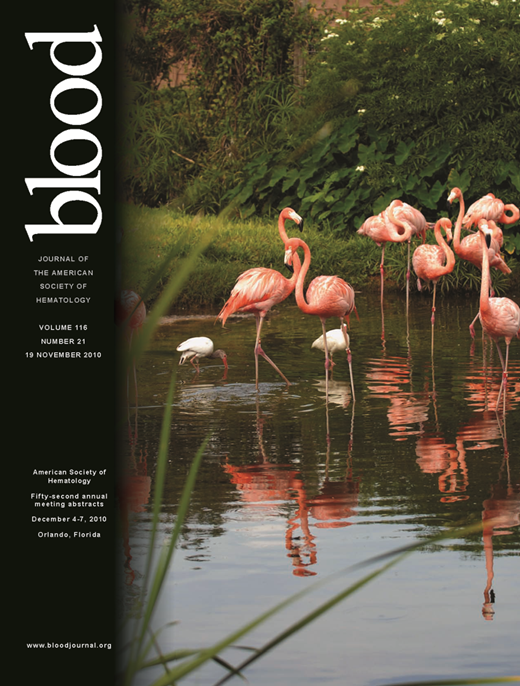Abstract
Abstract 3016
Multiple myeloma (MM) is an incurable disease characterized by genetically transformed clonal plasma cells that develop a proliferative advantage within the supportive bone marrow (BM) microenvironment. Recent findings from our and other laboratories have shown genetically unstable endothelial progenitor cells (EPCs) to be a key component of the MM microenvironment, integral to tumor neovascularization. However, the contribution and characterization of genomic alterations in the tumor microenvironment in the progression of MM has not been established. Using array-comparative genomic hybridization (aCGH), the present study examined genome-wide copy number alterations (CNAs) within the EPC genome and compared them to tumor cells and control endothelial cells (ECs). Published human copy number variations (CNVs) were excluded from the analyses.
Informed consent was obtained from all subjects. EPCs (>98% vWF/CD133/KDR+/CD38–) from BM aspirates of 16 untreated MM patients were outgrown on laminin-coated flasks. Controls included EPCs from healthy subjects and human umbilical vein ECs (HUVECs). For microarray analysis, genomic DNA from paired EPCs and tumor cells from MM patients enriched for CD38+ cells, as well as control cells, were hybridized to Agilent 244A Human Genome CGH Microarrays with differentially labeled control peripheral blood mononuclear cells, and feature intensities and ratios were extracted in Agilent CGH Analytics Software. The aberration detection method-1 algorithm was used to assess intervals in which the average log2 ratio of the MM cells and EPCs to control cells and ECs exceeded 0.3 (at least 1.23 fold-change). Human Genome Structural Variation Project (humanparalogy.gs.washington.edu) and the Database of Genomic Variants (projects.tcag.ca/variation) served as control CNVs. Affymetrix U133 plus 2.0 GeneChips confirmed gene expression using GeneSpring software (Agilent), and group comparisons were made by ANOVA.
Extensive chromosomal CNAs were found in MM EPCs; gains and losses were found to approximately the same extent in matched tumor cells. Germline CNVs accounted for less than 10% of MM EPC CNAs. The greatest number of CNA gains in EPCs were found on chr 7q, followed by 2p and 22q; the most recurrent sequences with CNA gains were on chr 7. The greatest CNAs losses in MM EPCs were found equivalently on chr 1q, 11q, and 15q. Consistent with their clonal expression in MM, immunoglobulin genes were found to be dysregulated in MM EPCs (e.g., 14q32 gains), which were confirmed at the gene expression level (e.g., over-expression of IGHG1 mRNA compared to control ECs). When comparing CNAs in MM EPCs to those in corresponding tumor cells, 15 of 16 patients (94%) shared identical CNAs at 2 or more loci, with greater than 48% similarity in CNAs between EPCs and tumor cells. Control EPCs and HUVECs did not show significant baseline alterations compared to control normal lymphocyte DNA, whereas identical CNAs were found in MM EPCs and tumor cells throughout their genomes. The most recurrent CNAs in both EPCs and tumors were found on chr 1 and 14, which are known to be highly dysregulated in MM. The clinical relevance of our aCGH data is suggested by the finding that more CNA gains and losses were found both in EPCs and in tumor cells from MM patients with treatment-resistant, progressive MM than in patients in remission (P<.01). The consequences of CNAs at the gene expression level in EPCs showed the highest level of dysregulation among the extracellular matrix genes. Discussion: aCGH results presented here are an extension of our previous findings of clonality within EPCs, including allelic X-chromosome inactivation and idiotypic IgH rearrangement, and further elucidate the genomic alterations responsible for increased angiogenesis in MM. The finding that MM-specific CNAs within EPCs correlate with resistant disease and poor survival may enhance existing criteria for prediction of aggressive MM, and also improve individualization of anti-myeloma strategies.
Our results strongly indicate that EPCs are an integral part of the neoplastic process in MM. Their altered genomic profile compared to control ECs indicates pathogenic functions critical for MM evolution. The high degree of commonly dysregulated genes among EPCs and MM cells permits prioritization of candidate MM-endothelial biomarkers not yet defined in this disease.
No relevant conflicts of interest to declare.
Author notes
Asterisk with author names denotes non-ASH members.

